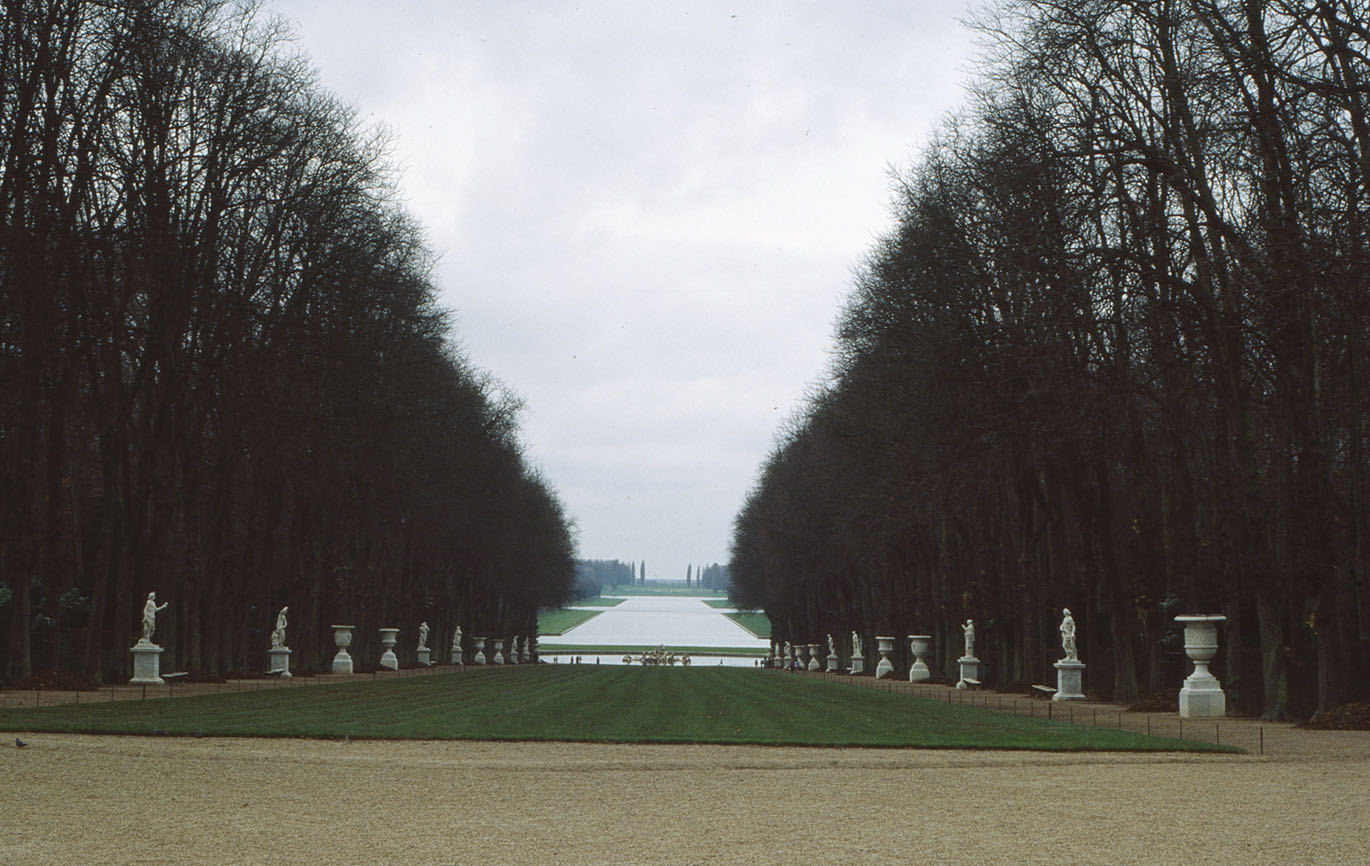
The garden at Versailles in winter
We were sitting in the deserted cafeteria at Versailles on the ground floor of the chateau. It was a cold, blustery day in late November, threatening rain. As we hovered over steaming cups of tea, my sister demanded, “What are we doing visiting a garden on a day like today?”
I tried to explain. “The best gardens are not only beautiful in the spring, summer, and fall. The best gardens are also beautiful in the winter. You just look at them in a different way—You look for the structure of the garden.” We rose and I began pulling on a sweater, a long coat, a raincoat over it, a knit hat over my ears, a thick scarf, gloves and an umbrella. Exasperated, my sister said, “You don’t look like you’re visiting a garden—You look like you’re fleeing Poland.”
Resolutely we walked outside. When we rounded the corner of the chateau on the way to the gardens, a blast of cold air hit us. Marjorie staggered back and retreated indoors. I leaned into the wind and pressed forward onto the Water Parterre, the vast terrace with reflecting pools that overlooks the enormous garden. I walked to the main axis of the chateau and garden and stopped at the top of the stairs. I looked out at the most famous garden vista in the world.
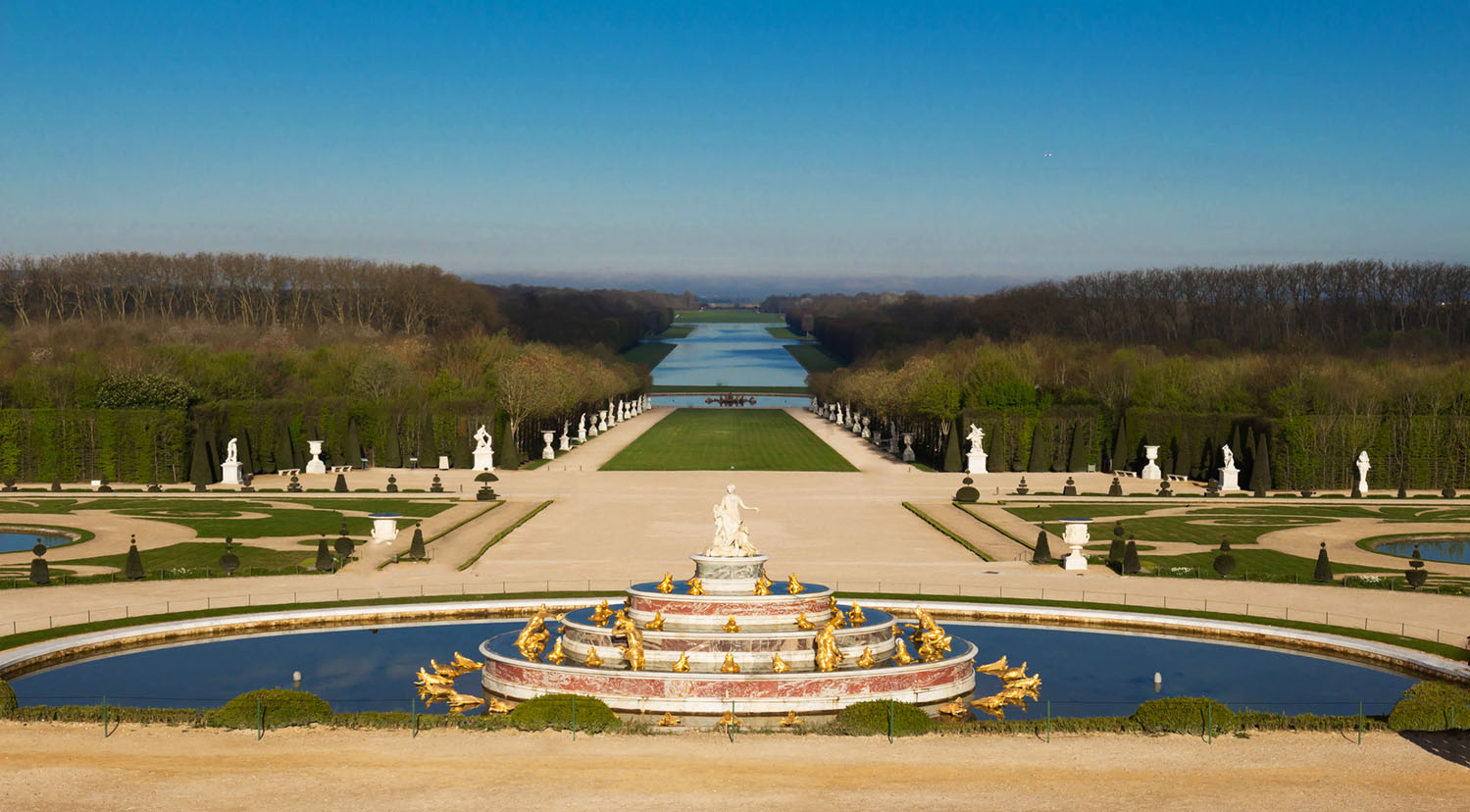
Versailles, the world’s most famous formal garden. Photo by Petr Kovalenkov/Shutterstock
Once I had visited these gardens on Bastille Day, one of the few days in the year when the fountains play. The July sun had been broiling hot and the crowd so enormous that it had pressed in around me and almost lifted me off my feet. Today I was the only one there.
The grey winter light revealed the elegant structure of the garden. On the terrace where I stood, the majestic sculptures that represent the rivers of France reclined around the edge of the pools. Beyond this was the Fountain of Latona, then the rectangular lawn of the Green Carpet, defined on both sides by rows of sheared hornbeam trees, their bare branches etched against the sky. Beyond the Green Carpet and the stupendous Fountain of Apollo, the water of the Grand Canal stretched to the horizon. The Canal reflected the slate grey clouds so perfectly that the line between earth and sky dissolved in illusion, the ultimate accomplishment of Baroque art. I had never seen a garden look more beautiful.
Landscape architecture is the art and science of designing outdoor space. Although Versailles represents landscape architecture at its most magnificent, the same principles of design apply to every garden, large or small, that aspires to be a work of art as well as a horticultural display. You may have an area where you grow flowers, shrubs and trees. But it’s not a fine garden unless it creates a pleasing sense of space, with proportions in balance and harmony. This balance can be accomplished in a formal, symmetrical design such as Versailles, or in an informal, asymmetrical design.
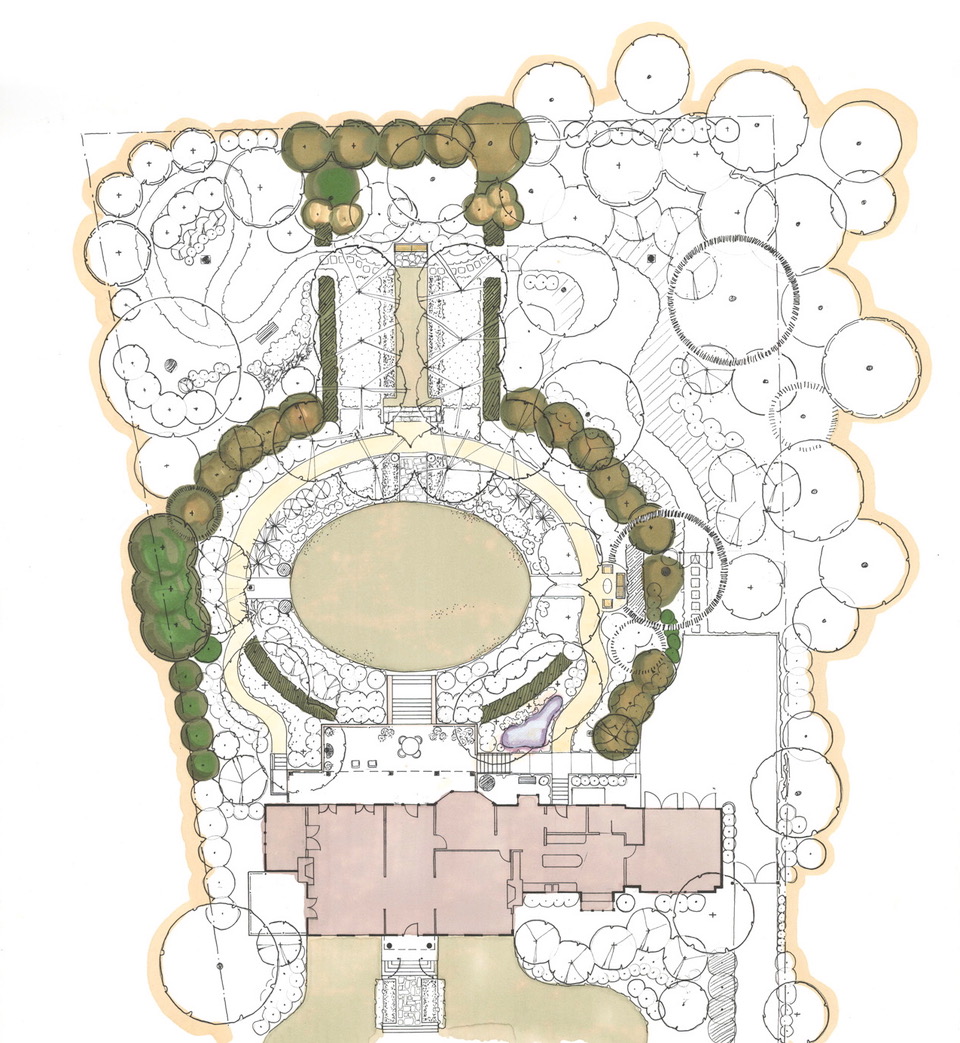
The plan of the author’s garden, with proportions in balance and harmony.
A fine garden is more than a place to grow plants—it is a graceful composition in space and time. The landscape architect designs in three dimensions to create a pleasing and practical outdoor space. To do this, he manipulates the ground plane (lawn, pavement, decks), vertical plane (hedges, walls, steps) and the overhead plane (sky, tree canopy, shade structure). These structures are sensed in every season, but they become prominent in winter. This is why a garden that is a work of art will also be handsome in winter. When the leaves fall, when the flowers fade, the layout of the hardscape, the walls, hedges, walks, steps, and garden structures, are clearly seen and appreciated.
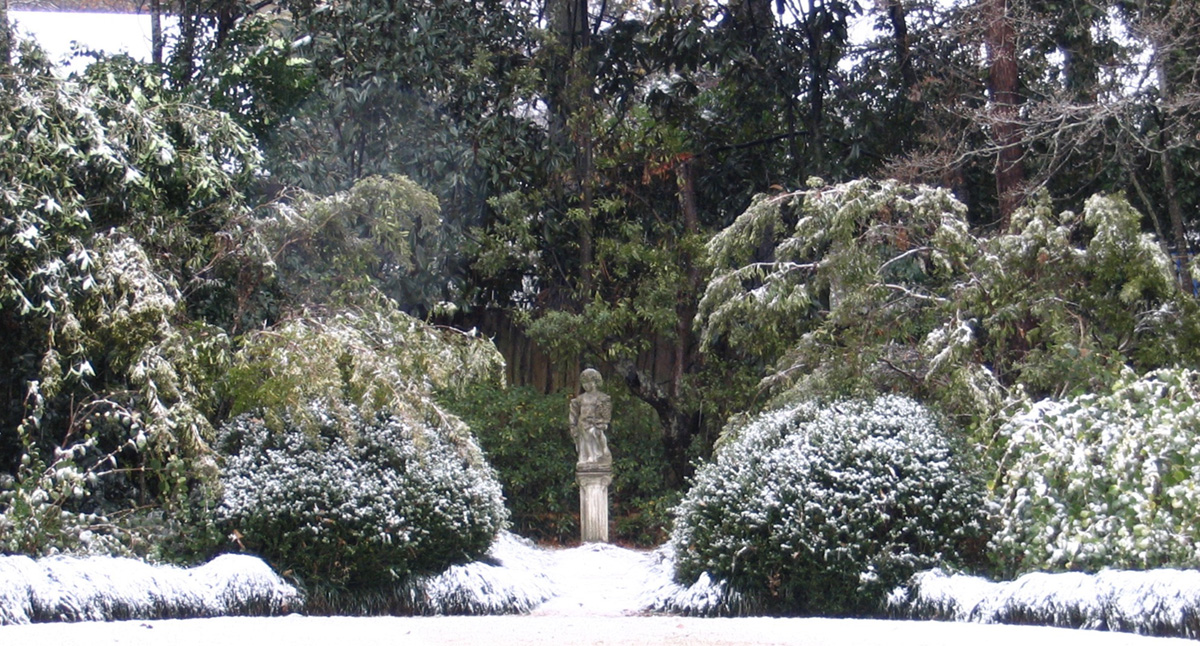
A focal point in the author’s garden.
In addition to manipulating the ground plane, vertical plane and overhead plane, a successful design locates the entrance, paths and focal point of the garden. The focal point is the main feature of the garden. This could be a pool or fountain, an arbor, sculpture or bench. When you enter the garden, you are moving in relation to this focal point. The tension which this creates as you walk through the garden is critical to the sense of the design as a whole.
The fourth dimension of garden design is time. You experience the garden in time as you walk through it, as the seasons change, and as the plants grow through the years.
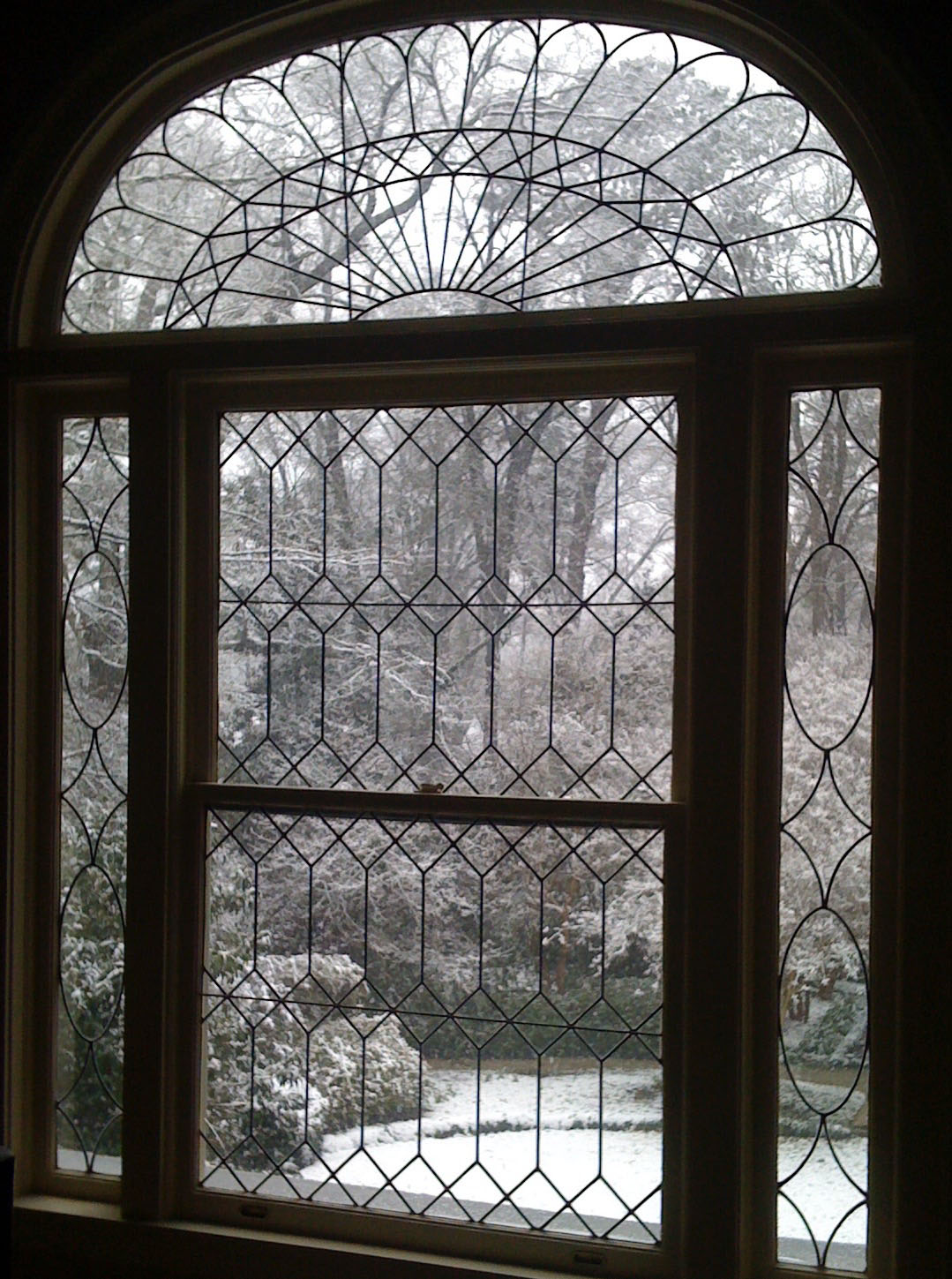
A garden in winter is frequently enjoyed indoors from a window. The author’s garden in Montgomery.
There is much beauty in the winter garden if we look for it. The muted palette of plants—greys, buffs, neutrals, tans, browns, evergreens—are subtle yet satisfying. The palette might also be evergreen and frost white. Plants with winter interest feature too. Sheared evergreen topiary, hollies with red berries, deciduous shrubs with colorful stems are delightful; yet they are all secondary considerations to the basic structure of the garden. The designer doesn’t think of plants first; she thinks of them last and locates them to reinforce the hardscape design.
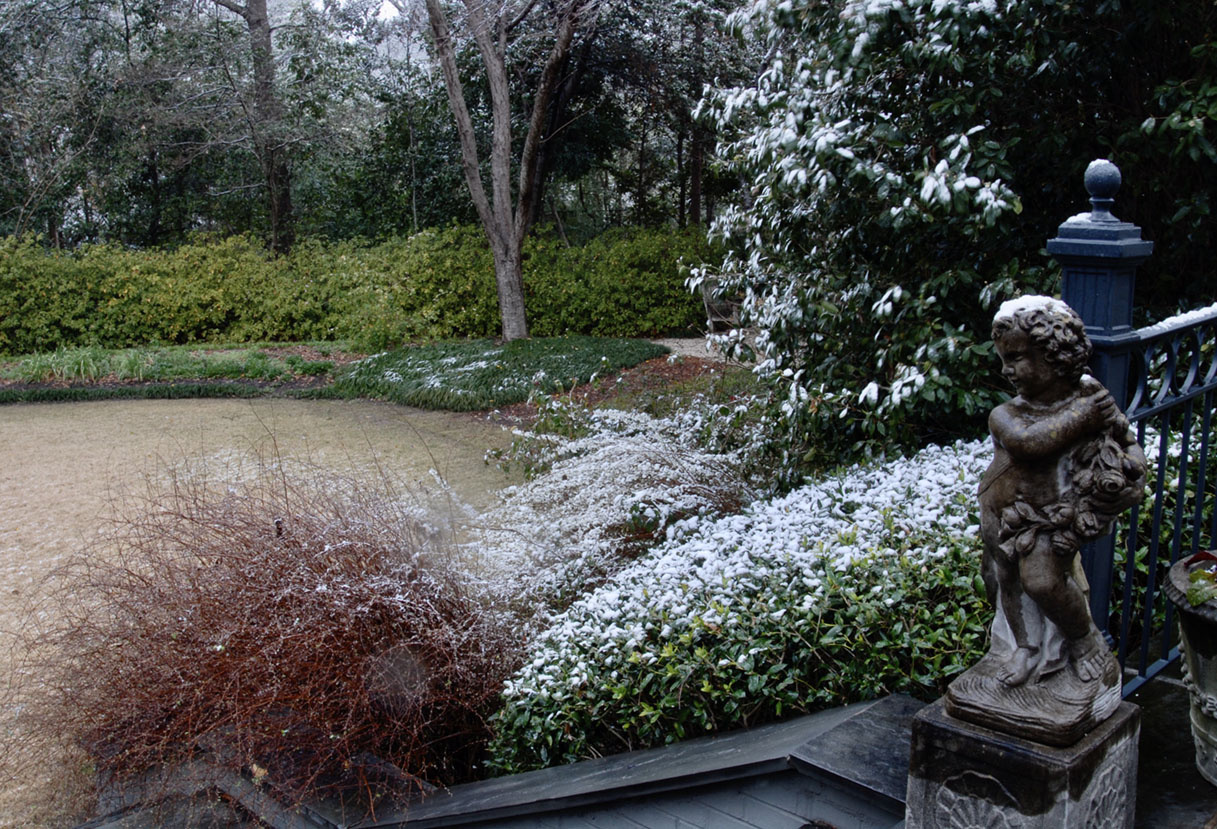
The palette of the winter garden is subtle yet satisfying.
The pleasure derived from a well-designed garden has little to do with the size of the garden. It could be Versailles where the vista stretches to the horizon; it could be your own garden, a small area of harmonious and graceful proportion. Unless you want to accommodate an activity with specific size requirements, for instance, a lap pool or a reception area for 200, the size of your garden does not matter much. In fact, some gardens are too big: they are too big and expensive to maintain well, and they are too big and expensive to design well.
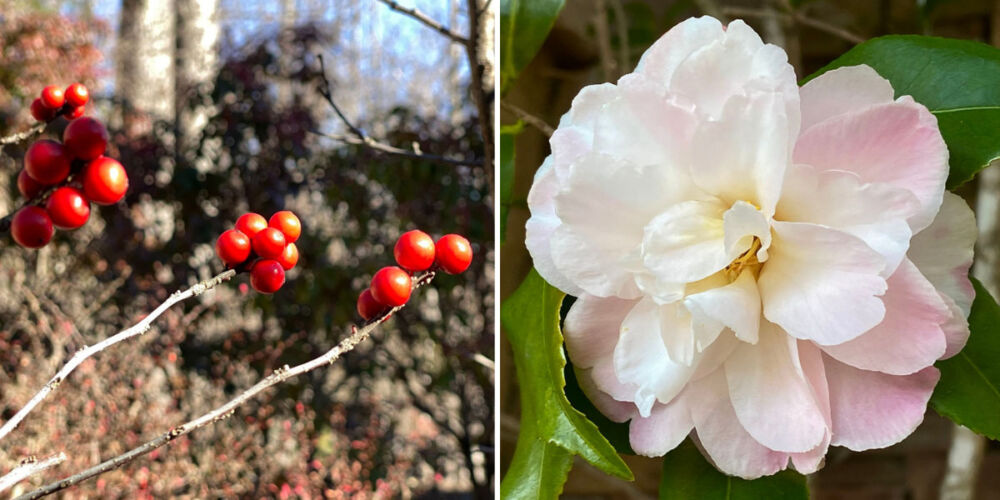
Choose plants for winter interest, such as winterberry (Ilex verticillata) and camellias.
Bigger is not always better. Think of the postage-stamp size gardens in Boston’s Back Bay or in Charleston. What matters is the attention given to accommodating your preferences, to the design of the overall space and to the selection of plants. In winter, as in every other season, a well-designed garden delights.
If your garden in winter looks boring and blah, perhaps it is time to consult a landscape architect or garden designer to reimagine your special retreat as a modest, yet satisfying, work of art.
Examples of Winter Gardens
Click the arrows (or swipe if on a mobile device) to see more
Text and photography Mary Walton Upchurch © 2021Garden writer Mary Walton Upchurch grew up in Montgomery, Alabama, and earned a degree in landscape architecture from the Harvard Graduate School of Design. For more than 30 years, she practiced in Montgomery as an award-winning landscape architect and wrote garden articles for a local publication. Now retired, she lives in western North Carolina where she built a home and garden on top of a mountain with panoramic views of the Blue Ridge Mountains. Follow her on Instagram at @marywaltonupchurch.



